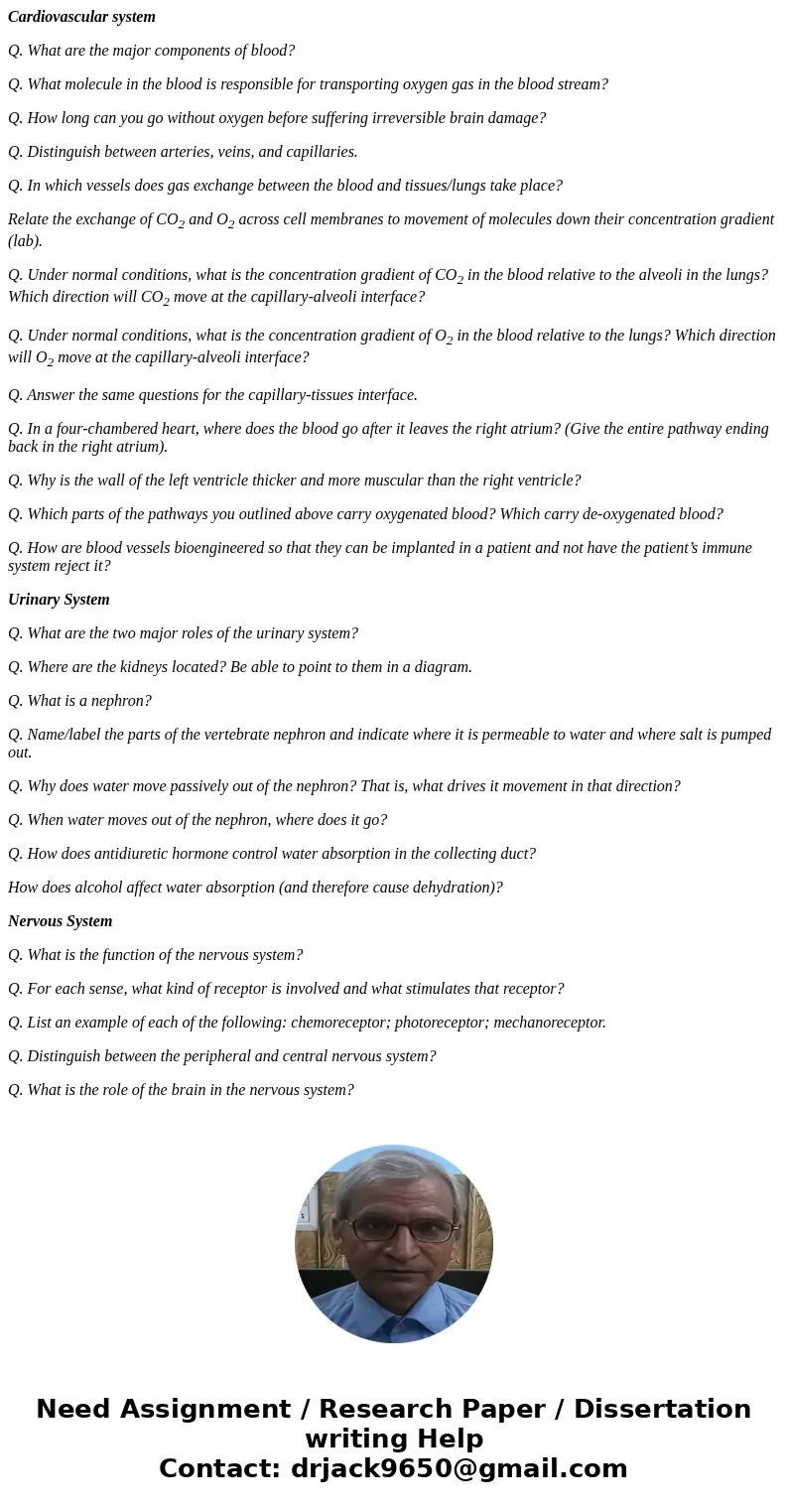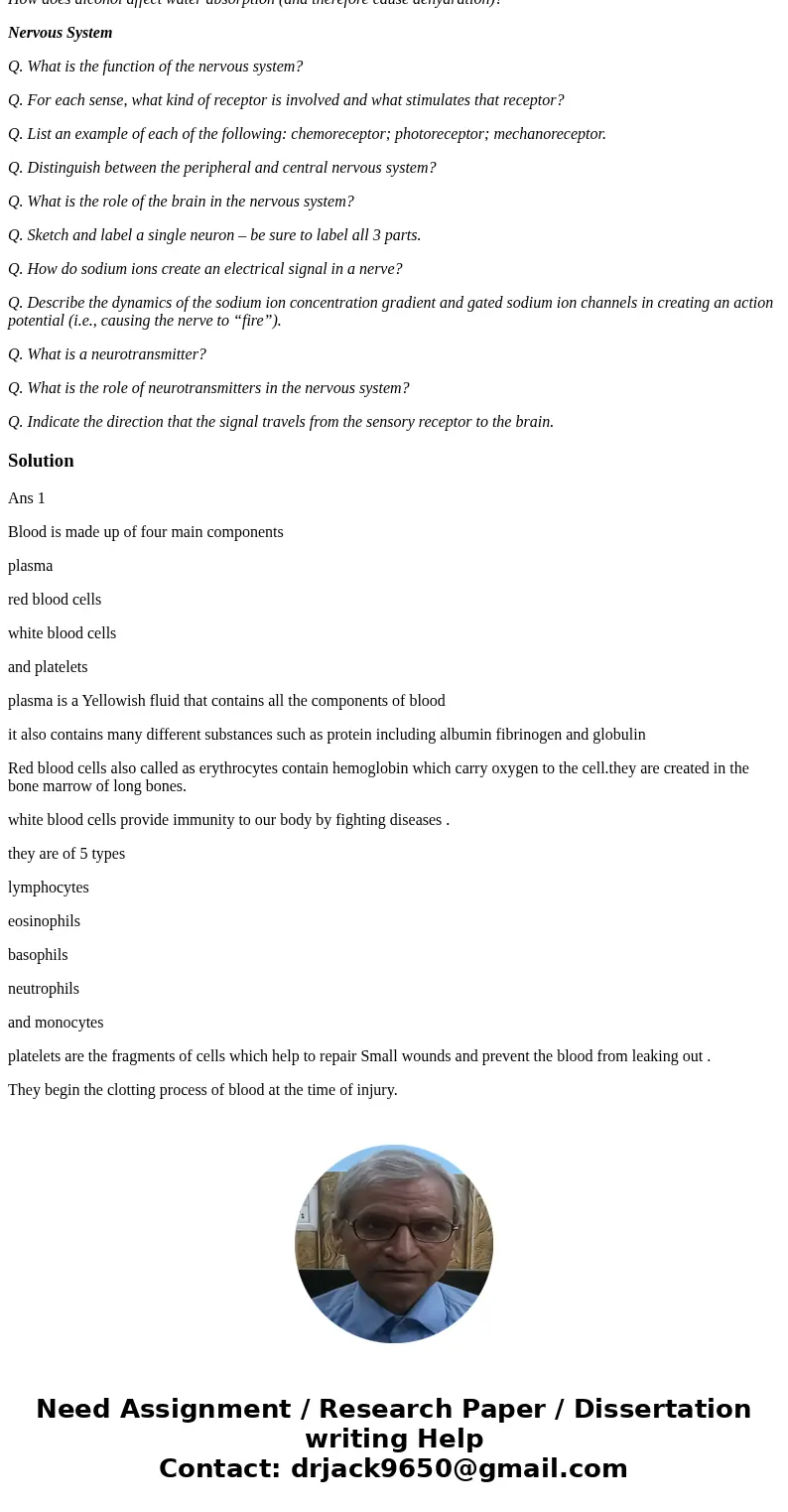Cardiovascular system Q What are the major components of blo
Cardiovascular system
Q. What are the major components of blood?
Q. What molecule in the blood is responsible for transporting oxygen gas in the blood stream?
Q. How long can you go without oxygen before suffering irreversible brain damage?
Q. Distinguish between arteries, veins, and capillaries.
Q. In which vessels does gas exchange between the blood and tissues/lungs take place?
Relate the exchange of CO2 and O2 across cell membranes to movement of molecules down their concentration gradient (lab).
Q. Under normal conditions, what is the concentration gradient of CO2 in the blood relative to the alveoli in the lungs? Which direction will CO2 move at the capillary-alveoli interface?
Q. Under normal conditions, what is the concentration gradient of O2 in the blood relative to the lungs? Which direction will O2 move at the capillary-alveoli interface?
Q. Answer the same questions for the capillary-tissues interface.
Q. In a four-chambered heart, where does the blood go after it leaves the right atrium? (Give the entire pathway ending back in the right atrium).
Q. Why is the wall of the left ventricle thicker and more muscular than the right ventricle?
Q. Which parts of the pathways you outlined above carry oxygenated blood? Which carry de-oxygenated blood?
Q. How are blood vessels bioengineered so that they can be implanted in a patient and not have the patient’s immune system reject it?
Urinary System
Q. What are the two major roles of the urinary system?
Q. Where are the kidneys located? Be able to point to them in a diagram.
Q. What is a nephron?
Q. Name/label the parts of the vertebrate nephron and indicate where it is permeable to water and where salt is pumped out.
Q. Why does water move passively out of the nephron? That is, what drives it movement in that direction?
Q. When water moves out of the nephron, where does it go?
Q. How does antidiuretic hormone control water absorption in the collecting duct?
How does alcohol affect water absorption (and therefore cause dehydration)?
Nervous System
Q. What is the function of the nervous system?
Q. For each sense, what kind of receptor is involved and what stimulates that receptor?
Q. List an example of each of the following: chemoreceptor; photoreceptor; mechanoreceptor.
Q. Distinguish between the peripheral and central nervous system?
Q. What is the role of the brain in the nervous system?
Q. Sketch and label a single neuron – be sure to label all 3 parts.
Q. How do sodium ions create an electrical signal in a nerve?
Q. Describe the dynamics of the sodium ion concentration gradient and gated sodium ion channels in creating an action potential (i.e., causing the nerve to “fire”).
Q. What is a neurotransmitter?
Q. What is the role of neurotransmitters in the nervous system?
Q. Indicate the direction that the signal travels from the sensory receptor to the brain.
Solution
Ans 1
Blood is made up of four main components
plasma
red blood cells
white blood cells
and platelets
plasma is a Yellowish fluid that contains all the components of blood
it also contains many different substances such as protein including albumin fibrinogen and globulin
Red blood cells also called as erythrocytes contain hemoglobin which carry oxygen to the cell.they are created in the bone marrow of long bones.
white blood cells provide immunity to our body by fighting diseases .
they are of 5 types
lymphocytes
eosinophils
basophils
neutrophils
and monocytes
platelets are the fragments of cells which help to repair Small wounds and prevent the blood from leaking out .
They begin the clotting process of blood at the time of injury.


 Homework Sourse
Homework Sourse